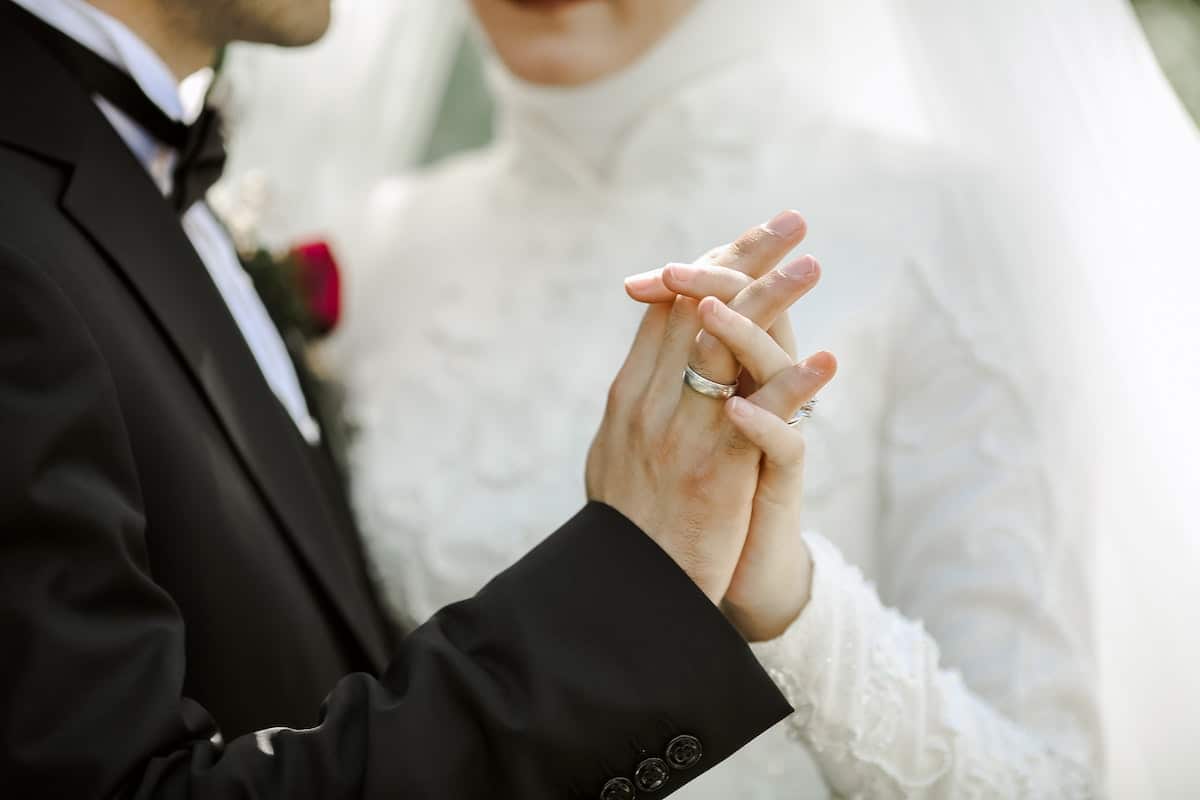Table of Contents
For most men, a wedding ring is one of the first pieces of jewelry they’ll wear. This can make wedding band shopping difficult, especially if you don’t have a preference for color, metal, or band type. It’s common for men to pick the traditional gold wedding band and call it a day.
However, a wooden wedding ring may be the unique, non-metal piece of jewelry you’re looking for if you prefer warm, earthy tones and classic styles. There’s more to a ring than its looks, so it’s essential to understand the pros and cons of this material before purchasing one.
Pro: Wood Tells a Story
Several men’s wood wedding rings actually develop spots as they age, meaning they won’t stay static. They form a more rustic, old wood-grain design, adding character and reflecting a deeper connection to nature. Wood rings don’t just tell a story; they tell your story.
Jewelers can use everything from barn wood to rifle stocks, from pearwood to koa wood, to create a ring that’s unique to you. They can even add metal to strengthen the band further.
Con: Less Sturdy Than Metal
People who work with their hands may want to avoid this ring type, as they tend to wear through high-impact activity. It’s rare to see a wooden ring that’s broken beyond repair, but it isn’t impossible, so if you want something that will hold up in your blue-collar job, choose metal.
While undeniably handsome with their organic warmth, wooden wedding rings might not be the perfect match for every groom. Wooden rings, as beautiful as they are, are susceptible to scratches, dents, and even cracks under pressure.
Men who work with their hands, be it wielding a hammer, coaxing a finicky engine, or shaping wood itself, need mens wedding bands that stand in the face of daily wear and tear. For these hands-on grooms, metal rings like tungsten can offer the type of ring they need.
These space-age metals are renowned for their scratch-resistant resilience that shrug off bumps and bruises with ease. They’ll stay smooth and gleaming even amidst a lifetime of tinkering.
So, while wooden rings hold a certain rustic charm, for the man who’s always creating, building, and fixing, a metal band might be a better choice.
Pro: Wood is Hypoallergenic
Gold ring allergies are pretty common in the world population, particularly in women. It’s likely that 3% of men and 30% of women have a nickel allergy, a common filler metal found in gold rings that makes them lighter. Even if you’re not allergic, your spouse might be.
Wood rings are hypoallergenic, meaning this material is less likely to cause an allergic reaction. If you or your spouse is sensitive to gold jewelry, wood could be the perfect band option.
Con: Wood Finishes Are Damaged by Chemicals
Wedding bands are often finished using oxidation, enameling, or plating, but wood rings often use cyanoacrylate glue (CA glue) to protect the wood from decomposing. While CA glue is durable, it’s easily damaged by solvents, sanitizers, and other chemicals that dissolve the glue.
Medical grade CA glue can help prevent most of the damage, but it can’t repel all of it. It’s a good idea to take off your ring before washing your hands, swimming, or showering.
Pro: Made From Eco-Friendly, Organic Material
Wood wedding bands are more eco-friendly than their metal counterparts. Several wood rings are made from scraps of high-quality materials, or they’re recycled from tossed, still usable organic woods. If recycled, wood mining is typically more sustainable than metal mining.
Con: Resizing Can be Difficult Due to Wood Treatments
Keep in mind that wood treatments prevent the ring from decaying or being reusable, which turns the ring from a renewable to a non-renewable resource. If you toss out the ring, it still creates waste, turning a previous positive into a negative for the eco-conscious.
What’s more, the treatments used wooden rings can make them difficult to resize. You’ll likely have to create an entirely different ring if you have to size up more than half a size.
Pro: Endless Variety
Wooden rings aren’t just made from wood and metal. In fact, wooden rings often use unique inlays like cloth, antler, coffee beans, flowers, and dinosaur bones within the band. It’s difficult to add certain materials to metal rings, but with wood, the possibilities are endless.
Wood is easy to dye, whereas with metal, you’re stuck with what you have unless you want to pay a pretty penny. With wood, your customization options won’t cost you an arm and a leg.
Photo by Melike Benli from Pexels


